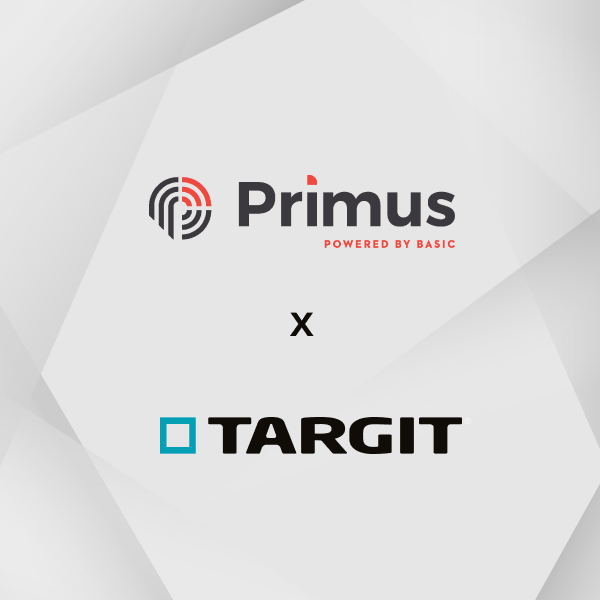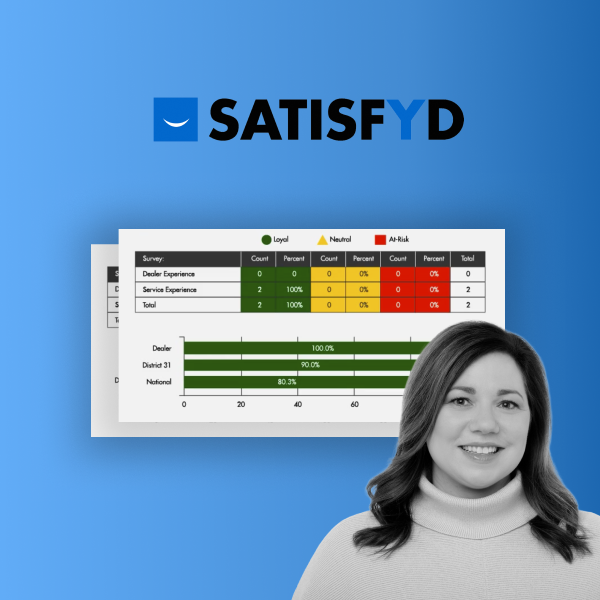No matter a dealership’s size, location, or growth trajectory, happy customers are essential to business success. Every dealer wants to deliver a great experience and turn every prospect into a satisfied, loyal customer who brings in recurring revenue and positive energy in the door.
However, “an exceptional customer experience” isn’t a single product that dealers can invest in or a solution they can implement in a matter of weeks. Instead, it’s something that’s developed over time and balanced against other competing business priorities, like operating costs, revenue, and employee experience.
In fact, employee and customer experience are inherently intertwined. The happier your employees are at work, the more attentive and positive they’ll be when interacting with your customers. Researchers estimate that 70% of a customer’s brand perception is determined by their experience with employees. This statistic highlights the intersectional nature of employee and customer experience —by investing in your employees’ experience and satisfaction, your dealership is indirectly investing in your customer experience as well. And a high level of employee satisfaction that’s supported by a clear, consistent company culture sets the stage for positive customer experiences in everyday interactions.
See How Employee Satisfaction Fuels Exceptional Customer Experiences
Read SATISFYD’s blog post, Boost Customer Loyalty by Prioritizing Employee Satisfaction, to see how today’s dealers are using employee satisfaction programs to improve company culture and retain happy customers.

In this blog, we’ll discuss the various ways dealers think about customer experience (CX), as well as the quantitative and qualitative benefits of a customer-centric approach to doing business. Finally, we’ll share several ways dealers can use a combination of customer feedback data and operational data from other departments to measure the impact of CX and identify opportunities for improvement.
How Do Equipment Dealers Approach Customer Experience?
- The top 15-20% of dealers employ a customer-first approach. They adhere to a set of top-down cultural beliefs through which the organization says, “The customer is our first priority." When business leaders make changes or implement new standard operating procedures, they always consider if the customer is the focus or if profitability is the focus. Leadership says profit is critical but also considers how each proposed change will impact customers, how well it aligns with the overall business strategy, and how it will affect employee experience in the long term.
- The middle ~30% of dealers consider customer and profit to be equal. They may struggle to make strategic decisions or work through issues with customers, since they don’t have defined priorities between their bottom line and their customers’ experience. These dealers often switch between prioritizing profit in one instance and the customer the next, creating a murky belief system that’s hard for employees to understand or buy into.
- The lower 50% of dealers prioritize profit over all else. When things escalate, the first question they ask is, “What will this cost us?” These dealers focus on the short term, getting caught up in isolated incidents rather than acknowledging the lifetime value of their customers and employees. This strategy yields short-term financial gains, but creates long-term challenges when it comes to competitiveness, customer satisfaction, and employee retention.
Dealers can’t abandon the health of their business for the sake of customer sentiment, but they shouldn’t do the opposite either. Instead, the best option is to create a blended strategy that prioritizes both customer and profit and factors in the intersection between the two.
Successful dealers always look at things from the customers’ point of view. They avoid putting profit above their customers, as this mindset communicates the wrong message to their employees and, eventually, to the customers themselves. This type of customer-focused approach is built for the long game. And when done right, a customer-centric business strategy is also a revenue-centric one.
Understanding Customer Experience as a Revenue Driver
It’s easy to assume that high customer experience and satisfaction rates contribute to high customer retention rates. These indicators might also point to a positive online reputation and effective word-of-mouth referral network.
But when we get down into the day-to-day practices that impact customers’ experiences at the dealership, it’s critical to understand how decisions about things like delays, service errors, and other potential concerns can impact revenue and customer satisfaction in the long term.
Most dealers already generate financial reports to track sales and revenue by customer, product line, etc. They likely also calculate customer satisfaction scores via NPS surveys or a voice of the customer program to get an overall picture of customer sentiment.
Both sets of metrics are valuable on their own, but by combining them, dealers can better understand the quantitative value of a positive customer experience — and the risk of chasing short-term profits at the expense of their customers.
So how does this work in practice?
Suppose a customer disputes a $10,000 invoice, stating that a missed service deadline forced them to rent another piece of equipment at their own expense. Rather than jumping at the potential $10k loss, a customer service employee could reference financial data to determine that the customer’s annual spend is $280,000 and their projected lifetime value is nearly $6M.
A customer-centric dealership will consider the long game: “This is a loyal customer with a high lifetime value. This dispute is relatively small compared to that value, but how we address it will have a long-term impact on our revenue.” The organization should tell its employees that — as long as the customer is one the business wants to retain — they have autonomy in how they resolve these issues, whether by absorbing the cost or splitting the difference with the customer.
Here are some other ways dealers can use data to tie customer experience to revenue:
- Track refunds by error type to understand the overall financial impact of issues like bad parts, bad service, and missed expectations while also identifying opportunities to improve customers’ experiences related to these issues.
- Integrate financial and CX reporting to measure “at-risk revenue.” See how much revenue comes from Detractors, Passives, and Promoters as per NPS survey results. Ideally, more revenue will come from stable, satisfied customers. Prioritize upsell and cross-sell to Promoters and assess the risk of attrition for Passives and Detractors.
- Monitor changes in revenue and customer sentiment simultaneously. Look at customers’ NPS results YoY and compare them to how revenue changed within the same period. Then, evaluate why revenue may have changed, whether based on the economy, a high number of negative service interactions, or the dealership’s share of wallet in a particular customer segment.
On-Demand Webinar: Evolving Dealer Customer and Employee Experience
Employee and customer expectations are constantly evolving. Join Ryan Condon and Emilie Spalla from SATISFYD as they share actionable recommendations for incorporating customer and employee insights into your overall business strategy to help grow revenue and retain staff.
Five Ways to Improve Customer Experience at Your Dealership
Understanding the intersection between customer experience and financial performance is critical for dealers looking to balance their priorities and sustain growth. However, it’s only the first step to creating a profitable, customer-centric business model.
Along with establishing a company culture that prioritizes customers’ experiences, equipment dealers should encourage decision-makers across their organization to integrate multiple CX-related metrics into their daily operations.
People like managers and service department leaders should leverage customer experience data alongside other metrics, such as financial, inventory, and employee feedback data, to emphasize the value of customer experience and identify ways to improve it.
Here are five ways dealers can use integrated data analysis and reporting solutions to improve their customer experience:
- Communicate the strategic value of customer experience as it relates to operations and finance by sharing relevant reports with the executive board and location-level managers.
- Identify a CX-related training opportunity, such as call reviews or an online training program, then implement process improvements based on the training objectives.
- Establish an internal feedback loop so employees can communicate the adoption and effectiveness of various CX-related initiatives. Then, feed this information into a quantitative metric that leadership teams can track, such as one related to success or adoption rate.
- Create a flywheel of continuous improvement in which better CX leads to better employee experience, which leads to positive customer-employee interactions, which leads to more revenue, which allows for additional CX training, which leads to further CX improvements, and so on.
- Integrate CX data with other reports and dashboards. For example, choose three NPS scores to monitor for the next quarter and integrate that data into the dashboards service managers and leadership teams use to monitor the business as a whole.
Unlock Decision-Leading CX Insights With the TARGIT + SATISFYD Integration
To connect the dots between customer experience data and the rest of your reporting insights, you need a powerful Voice of the Customer (VOC) solution and an end-to-end business intelligence platform that makes VOC and other types of data accessible to employees at every level of your operations.
That’s where TARGIT and SATISFYD come in.
TARGIT’s BI solution for dealers combines all your data in one place, then automates reporting to give you up-to-date reports and dashboards for every department.
SATISFYD’s VOC solution gives you the tools to gather and act on important customer feedback.
By integrating SATISFYD with TARGIT, you can access the latest customer experience data inside the dashboards your teams already use to drive daily decisions. Plus, you can overlay CX data with financial information, employee experience data, and other operational insights to start measuring the true business impact of CX and identifying ways to improve customer experience across your dealership.
Interested in learning more?
Watch our on-demand webinar to explore SATISFYD’s latest CX Benchmark Report and see how James River Equipment uses the TARGIT + SATISFYD integration to promote customer-centric operations.
See How Dealers Use TARGIT and SATISFYD to Improve Customer Experience
About the Author
Ryan Condon is the Co-Founder and CEO of SATISFYD. Since 1998, Ryan has been working with global equipment manufacturers and dealer owner groups to build more customer-centric organizations that outperform the competition. Ryan is an equipment industry veteran and expert in customer and employee experience management. Ryan has delivered over 100 in-person classes and speeches to help educate and inform on the power of delivering unique and consistent customer and employee experiences. Ryan and his wife live in Austin, TX, with their four kids. Ryan is an avid mountain biker and runner.
About SATISFYFD
SATISFYD is the leading customer and employee experience software provider for machinery dealerships and manufacturers. We empower organizations to capture and act on customer and employee experience insights through automation and integrations. Our deep industry experience and turnkey solutions make it easy for our partners to stay connected with their customers and employees to make sure their business continues to thrive.
.png)







